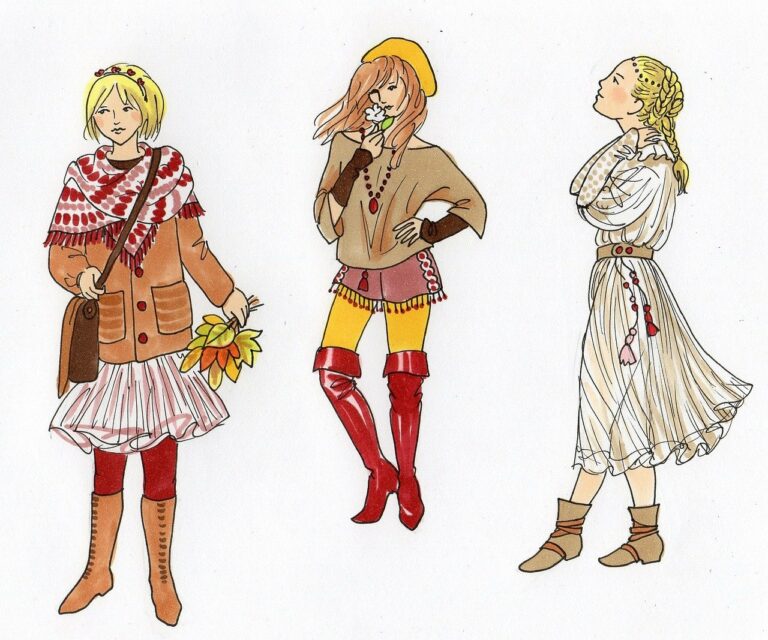Fashion and Cultural Appropriation: Navigating Controversies in Design
Cultural appropriation is a controversial and often misunderstood concept that involves adopting elements of a marginalized culture by a dominant culture. It involves borrowing or imitating certain cultural practices, styles, or symbols without understanding or respecting their significance. This can lead to the erasure of the original meaning or importance of those cultural elements and perpetuate stereotypes and misconceptions.
– Cultural appropriation can be harmful as it can reinforce power dynamics and inequalities between different cultures.
– It is important to recognize the difference between cultural appreciation and cultural appropriation. Appreciation involves respecting and honoring a culture, while appropriation involves taking elements without permission or understanding.
– The impact of cultural appropriation extends beyond just fashion or music; it can also affect religious practices, traditions, language, and sacred symbols.
– In order to avoid cultural appropriation, individuals should educate themselves about the history and significance of the cultural elements they are interested in incorporating into their own lives.
– Respectful collaboration with members of the culture being borrowed from is essential in order to ensure that the representation is accurate and respectful.
Understanding the Impact of Cultural Appropriation in Fashion
Cultural appropriation in fashion refers to the act of adopting elements from a culture that is not your own without proper acknowledgment or respect. This practice often leads to exploitation and misrepresentation of the original culture, perpetuating harmful stereotypes and marginalizing marginalized communities. When designers appropriate cultural symbols, clothing, or styles without understanding their significance, they risk commodifying sacred traditions and reducing them to mere fashion trends.
The impact of cultural appropriation in fashion is far-reaching and extends beyond the realm of aesthetics. It contributes to the erasure of the rich history and heritage of oppressed communities, turning their cultural symbols into mere accessories for profit. By profiting off cultural elements without giving credit to their origins, fashion brands not only disrespect the communities they borrow from but also reinforce power dynamics that perpetuate inequality and discrimination.
Examples of Cultural Appropriation in Fashion Design
Cultural appropriation in fashion design has been a hotly debated topic in recent years, with several prominent instances sparking outrage and controversy. One such example is when a high-end fashion brand showcased a collection heavily inspired by Native American culture, using traditional patterns and designs without proper recognition or respect for the community from which they originated. This appropriation not only trivialized the significance of these cultural symbols but also commercialized them for profit without benefiting the indigenous people.
Another glaring example of cultural appropriation in fashion design occurred when a mainstream clothing brand produced a line of clothing featuring sacred African symbols and motifs. Despite lacking any understanding of the cultural significance behind these designs, the brand marketed them as trendy and fashionable, completely disregarding the spiritual and historical meanings they hold for the African community. This disregard for the cultural context of these symbols perpetuates harmful stereotypes and reinforces the erasure of authentic narratives, contributing to the ongoing cycle of appropriation in the fashion industry.
What is cultural appropriation?
Cultural appropriation is the act of taking or borrowing elements of a culture that is not your own without permission or understanding of its significance.
Why is cultural appropriation a problem in fashion design?
Cultural appropriation in fashion design can perpetuate harmful stereotypes, disrespect sacred cultural symbols, and exploit the creativity of marginalized communities.
How can fashion designers avoid cultural appropriation?
Fashion designers can avoid cultural appropriation by educating themselves on the cultural significance of the elements they are using, collaborating with members of the culture they are drawing inspiration from, and giving credit where credit is due.
Can cultural exchange be a positive thing in fashion design?
Yes, cultural exchange can be a positive thing in fashion design when done respectfully and with permission from the culture being borrowed from. It is important to give credit to the sources of inspiration and show appreciation for the culture being represented.







